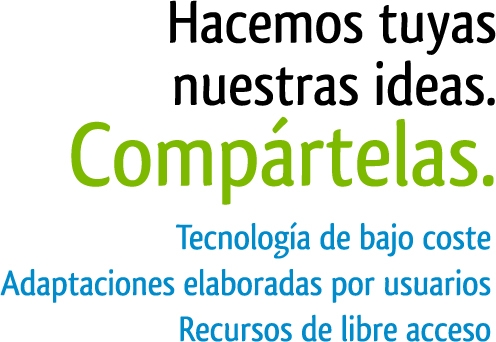f- 01: arterio-venous fistula f- 08: cardiovascular complications the impact of arteriovenous fistulae on the myocardium: the impact of
F- 01: Arterio-venous fistula
F- 08: Cardiovascular complications
The Impact of Arteriovenous Fistulae on the Myocardium: The Impact of
Creation and Ligation in the Transplant Era
Juan Camilo Duque, Camilo Gomez, Marwan Tabbara, Carlos E. Alfonso, et
al.
Journal : Seminars in Dialysis
Year : 2015 / Month : May–June
Volume : 28
Pages : 305–310
DOI: 10.1111/sdi.12313
ABSTRACT
Cardiac hypertrophy is a relatively common complication seen in
patients with advanced chronic kidney disease (CKD) and end-stage
renal disease (ESRD). Moreover, cardiac hypertrophy is even more
frequently seen in patients with ESRD who have an arteriovenous (AV)
access. There has been substantial evidence pertaining to the effects
of AV access creation on the heart structure and function. Similarly,
there is increasing evidence on the effects of AV access closure, flow
reduction, transplantation, and immunosuppressive medication on both
endpoints. In this review, we present the evidence available in the
literature on these topics and open the dialog for further research in
this interesting field.
COMMENTS
Cardiac hypertrophy, specifically left ventricular hypertrophy (LVH),
is a common complication seen in patients with advanced chronic kidney
disease (CKD) and end-stage renal disease (ESRD). Cardiac hypertrophy
is even more frequently seen in patients who have an arteriovenous
fistula (AVF) as a vascular access for hemodialysis (HD).
Even though the hemodynamic effects of AV access have been well
studied, there are still multiple unanswered questions about the
relation of AV access to cardiac remodeling. These cardiac changes are
typically seen at the time of AV access closure after kidney
transplant and in situations where the AV access flow is modified by
surgical techniques.
Physiological stimuli for ventricular growth in patients with renal
disease other than hypertension, the main mechanical cause of
concentric type and the second cause of CKD, have been widely
described. Conditions such as anemia, parathyroid hormone activity, AV
access, and the repetitive silent ischemia, all pathognomonic of CKD
patients, play an important role and are recognized as promoter
factors in the heart thickening.
Changes in the heart chambers after AV access placement, during HD and
interdialysis sessions have been widely reported. The
echocardiographic parameters changes depend on fluid overload and
variability in preload between each dialysis session, and echograms of
the left atrial volume (LAV) measurements emerged as a potential
barometer for risk stratification and risk monitoring in end-stage
renal disease (ESRD) patients. Literature shows that immediately after
AVF creation, the cardiac output increases by 10 to 20%, leading to an
increased volume in the left atrium, the inferior vena cava, and end
diastolic volume.
High AV access flows increase the cardiac output and workload, which
could results in heart failure (HF). The Vascular Access Society
categorizes AV access with a high flow when the flow is higher than
1.0–1.5 l/minute and has a cardio pulmonary recirculation of more than
20%. Patients with high output HF present with dyspnea, orthopnea,
paroxysmal dyspnea, edema, and the presence of a cardiac index greater
than 3.0 l/minute/m2. AV access with high flow is a serious but
infrequent complication present in the HD patients.
Kidney transplantation has been shown to decrease cardiovascular
mortality rate and prevalence of HF, suggesting a reduced cardiac risk
compared to HD patients associated with regression of LVH. However,
routine AVF closure after transplantation procedures shows a
discrepancy in the results. Consequently, it is not routinely
recommended to close AV access immediately after transplantation.
Pr. Jacques CHANARD
Professor of Nephrology
 DER WOLF UND DIE SIEBEN GEISSLEIN NACH DEN GEBRÜDER
DER WOLF UND DIE SIEBEN GEISSLEIN NACH DEN GEBRÜDER EVOTING MANUAL USER MANUAL ON EVOTING SYSTEM FOR ISSUERS
EVOTING MANUAL USER MANUAL ON EVOTING SYSTEM FOR ISSUERS P ÁGINA 10 DE 10 ENGROSADOR MULTIFUNCIONAL ESTE OBRA
P ÁGINA 10 DE 10 ENGROSADOR MULTIFUNCIONAL ESTE OBRA NP 188 GABINETE DE PRENSA 27 DE JUNIO DE
NP 188 GABINETE DE PRENSA 27 DE JUNIO DE FERIA TURÍSTICA NOR AMAZÓNICA ¡PERÚ MUCHO POR DESCUBRIR! PIURA
FERIA TURÍSTICA NOR AMAZÓNICA ¡PERÚ MUCHO POR DESCUBRIR! PIURA FODRH XXX MODIFICATION DES CONDITIONS DE REMUNERATION D’UN AGENT
FODRH XXX MODIFICATION DES CONDITIONS DE REMUNERATION D’UN AGENT FORM FL‑27 [RULE 1253(C)] COURT FILE NUMBER CLERK’S STAMP
FORM FL‑27 [RULE 1253(C)] COURT FILE NUMBER CLERK’S STAMP THE CHALLENGE OF SOVEREIGN WEALTH FUNDS PHILIPP M
THE CHALLENGE OF SOVEREIGN WEALTH FUNDS PHILIPP M oswiadczenia
oswiadczenia MAPPING ABUNDANCES TO PEAK INTENSITIES FOR VIRTUAL MALDITOF INSTRUMENT
MAPPING ABUNDANCES TO PEAK INTENSITIES FOR VIRTUAL MALDITOF INSTRUMENT REPUBLIKA SLOVENIJA MINISTRSTVO ZA OKOLJE PROSTOR IN ENERGIJO DUNAJSKA
REPUBLIKA SLOVENIJA MINISTRSTVO ZA OKOLJE PROSTOR IN ENERGIJO DUNAJSKA USO DE ESTAS PLANTILLAS LAS PRESENTES PLANTILLAS SON PARA
USO DE ESTAS PLANTILLAS LAS PRESENTES PLANTILLAS SON PARA